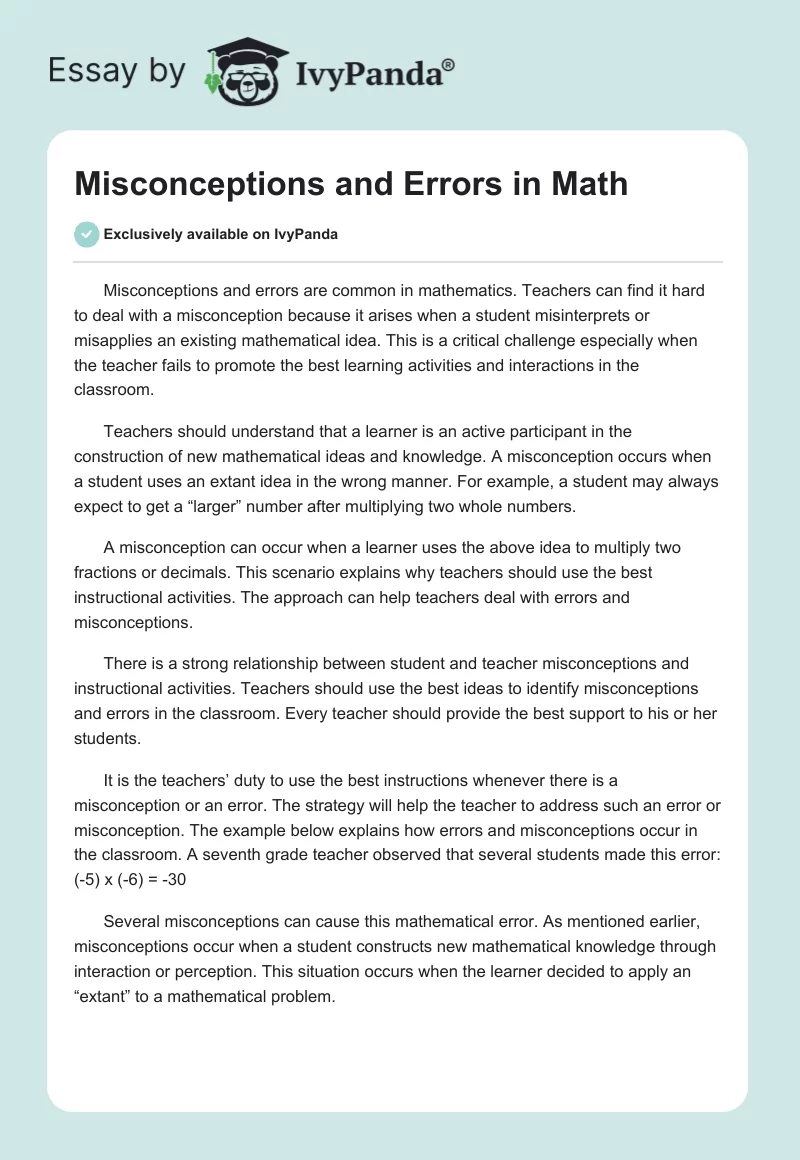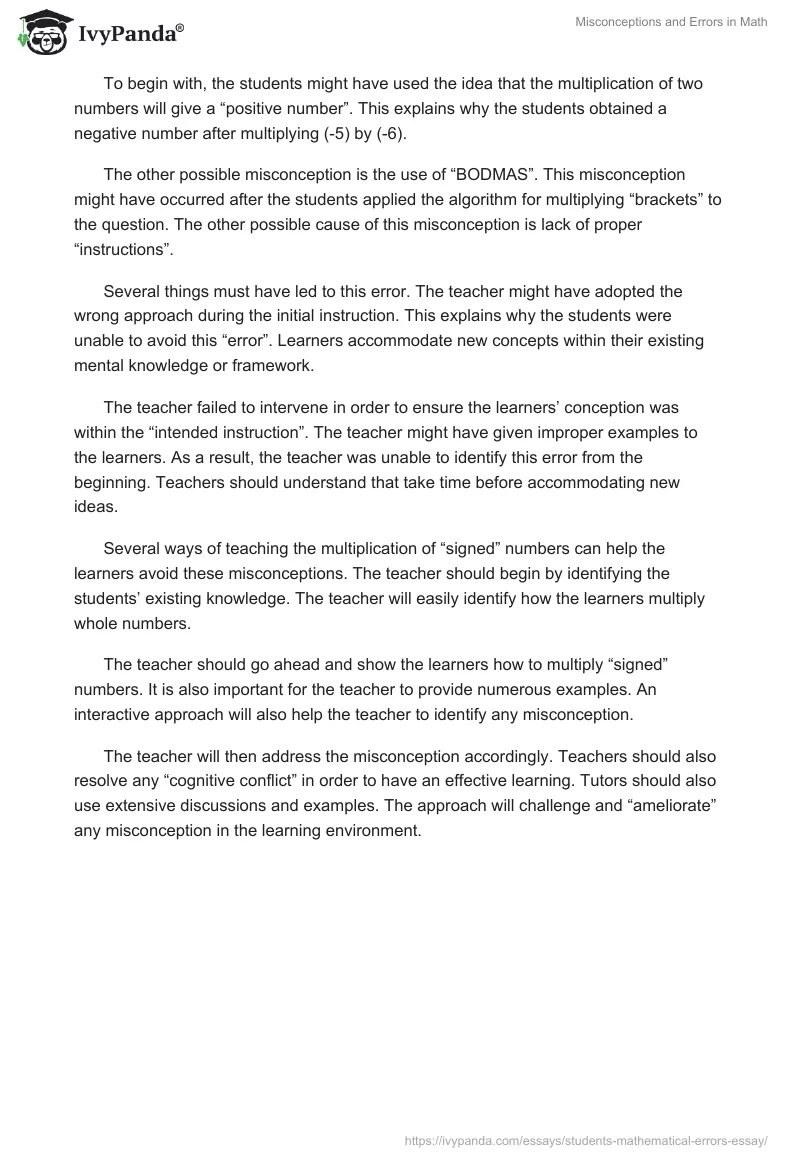Misconceptions and errors are common in mathematics. Teachers can find it hard to deal with a misconception because it arises when a student misinterprets or misapplies an existing mathematical idea. This is a critical challenge especially when the teacher fails to promote the best learning activities and interactions in the classroom.
Teachers should understand that a learner is an active participant in the construction of new mathematical ideas and knowledge. A misconception occurs when a student uses an extant idea in the wrong manner. For example, a student may always expect to get a “larger” number after multiplying two whole numbers.
A misconception can occur when a learner uses the above idea to multiply two fractions or decimals. This scenario explains why teachers should use the best instructional activities. The approach can help teachers deal with errors and misconceptions.
There is a strong relationship between student and teacher misconceptions and instructional activities. Teachers should use the best ideas to identify misconceptions and errors in the classroom. Every teacher should provide the best support to his or her students.
It is the teachers’ duty to use the best instructions whenever there is a misconception or an error. The strategy will help the teacher to address such an error or misconception. The example below explains how errors and misconceptions occur in the classroom. A seventh grade teacher observed that several students made this error: (-5) x (-6) = -30
Several misconceptions can cause this mathematical error. As mentioned earlier, misconceptions occur when a student constructs new mathematical knowledge through interaction or perception. This situation occurs when the learner decided to apply an “extant” to a mathematical problem.
To begin with, the students might have used the idea that the multiplication of two numbers will give a “positive number”. This explains why the students obtained a negative number after multiplying (-5) by (-6).
The other possible misconception is the use of “BODMAS”. This misconception might have occurred after the students applied the algorithm for multiplying “brackets” to the question. The other possible cause of this misconception is lack of proper “instructions”.
Several things must have led to this error. The teacher might have adopted the wrong approach during the initial instruction. This explains why the students were unable to avoid this “error”. Learners accommodate new concepts within their existing mental knowledge or framework.
The teacher failed to intervene in order to ensure the learners’ conception was within the “intended instruction”. The teacher might have given improper examples to the learners. As a result, the teacher was unable to identify this error from the beginning. Teachers should understand that take time before accommodating new ideas.
Several ways of teaching the multiplication of “signed” numbers can help the learners avoid these misconceptions. The teacher should begin by identifying the students’ existing knowledge. The teacher will easily identify how the learners multiply whole numbers.
The teacher should go ahead and show the learners how to multiply “signed” numbers. It is also important for the teacher to provide numerous examples. An interactive approach will also help the teacher to identify any misconception.
The teacher will then address the misconception accordingly. Teachers should also resolve any “cognitive conflict” in order to have an effective learning. Tutors should also use extensive discussions and examples. The approach will challenge and “ameliorate” any misconception in the learning environment.


